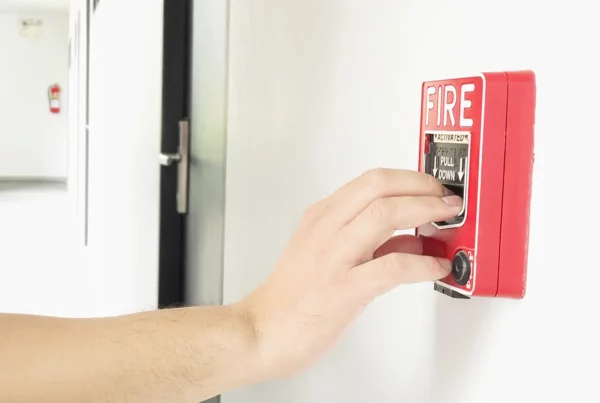
Outdoor lighting can add a new dimension to your property. Adding an extra source of light is not only useful for entertaining at night time but also serves as a deterrent against burglaries and a good safety feature to have whilst walking the dogs.
Landscape Lighting
The use of outdoor lights in private gardens and public landscapes is known as landscape lighting or garden lighting; for the enhancement and purposes of safety, nighttime aesthetics, accessibility, security, recreation and sports, and social and event uses.
Landscape lighting involves the incorporation of a broad range of outdoor luminaire types, including low-level path lights, accent uplights, wall-mounted lights, bollard lights, and floodlights. The use of landscape lighting may also incorporate temporary lighting systems (e.g., for special events) such as festoon light strings, chandeliers, and lanterns.
The term landscape lighting is the most commonly used term in North America; however, the terms garden lighting and outdoor lighting are also commonly used in reference to this application. Landscape luminaires are usually either high-intensity discharge lamps (HID lamps), fluorescent lamps, or LED arrays.
Landscape lighting can be a part of a broader exterior lighting design that includes building façade illumination, pedestrian wayfinding along sidewalks and pathways, illuminated signage for businesses and corporate campuses as well as public parks.
Uplighting
Uplighting is a type of outdoor light that shines up onto a feature or object such as a tree or building. Uplighting can dramatically change the look of any structure or garden. Uplights add contrast and depth to any area or feature they are illuminating.
It’s not surprising that uplights are one of our most popular types of outdoor light fixtures because they are easy to use and place within your garden without doing any damage. They also give off a soft glow which looks great with most natural elements such as trees and bushes.
The key to good uplighting is making sure that you have enough light for the particular feature that you are trying to highlight. You may need multiple up-lighters to ensure you have enough light on a larger structure such as a building facade or large tree.
So, How Does Uplighting Work?
When you put up a light, it illuminates the area around it – this is what we call ambient lighting. If you want to highlight specific features in your garden, such as trees or statues, you need to focus the light on these areas. This is what we call uplighting. Let’s look at an example of uplighting to understand how it works.
Imagine you have a tree in your garden that you want to illuminate. In this case, you would place the light underneath the tree and point it upwards towards the tree branches. This will direct the light towards the foliage and make your tree stand out from its surroundings.
Uplighting is extremely useful if you want to highlight certain features in your garden, like statues or water features. When used correctly, uplighting can increase your property value by accentuating key aspects of your home and garden design.
Downlighting
Downlighting is a term that refers to an outdoor light fixture that is mounted on a wall or ceiling and faces down. These fixtures can be mounted on the floor, post, or wall. It all depends on the type of light fixture you have chosen. The most common type of Downlighting is ceiling-mounted fixtures. These are often found in kitchens, bathrooms, living rooms, and patio areas.
When you are looking for a way to add some security to your home or business with outdoor lighting, then you should consider downlighting in outdoors. This will allow you to have complete control over the amount of light you need to see at night. This will also help you ensure that there are no people hiding in the darkness around your property.
Examples of down lighting in outdoors include porch lights and outdoor patio lights. Most of these lights come with built-in timers so that they turn off automatically when it gets dark outside. You can find these types of fixtures at home improvement stores as well as online retailers.
Parking Lot Lighting
Parking lot lighting can make all the difference when it comes to making your property safe and secure. It doesn’t matter if you have a large parking lot or a small lot; it is important to have adequate lighting. All areas of your parking lot should be well-lit, especially the entrances and exits, around dumpsters and recycling bins, any doors that lead into your business, and along all walkways. Here are some things to consider when choosing the best parking lot lighting for your property.
What Is Parking Lot Lighting?
Parking lot lighting helps people see where they’re walking at night or in bad weather conditions. With these lights in place, you can help reduce liability by ensuring that cars and pedestrians can move safely through the parking lot without crashing into each other or tripping on an object in their path.
Examples of Parking Lot Lighting
A parking lot lighting system can be designed using various technologies:
- High-pressure sodium (HPS) lamps, which are commonly used in parking lot lighting, emit a yellowish light that is well-suited for security uses. However, the color of HPS lights dulls the appearance of painted lines and other markings on the ground. They also make it difficult to distinguish certain colors like red and green.
- Metal halide lamps offer a whiter light than HPS. They allow for clearer visibility and produce better color rendering than HPS lamps. However, metal halide lamps are less efficient than HPS lamps and require more time to turn on.
- Light-emitting diode (LED) lamps are becoming more common in parking lot lighting systems because they offer many advantages over conventional types of light sources. LEDs have a very long lifespan, and their energy efficiency is much greater than that of conventional lighting technologies. They produce very little thermal radiation or infrared light, making them safer for commercial applications like parking lots where people are present. The small size of LEDs allows them to be incorporated into relatively small fixtures that provide more focused lighting than conventional lamp-based fixtures.
Perimeter Lighting Around Buildings
Perimeter lighting around buildings provides light to the areas surrounding a building, which may include parking lots, sidewalks, driveways, and other areas. Perimeter lighting can make these spaces safer for foot traffic and improve security.
How Does It Work?
Perimeter lights can be used to illuminate the edges of your home for safety and security. Lights that are located near walkways, steps, and doorways help guide visitors to your front door and prevent falls. Motion-activated perimeter lights turn on when they detect movement, helping save energy by illuminating only when needed. Many perimeter lights also come with a photocell sensor that automatically turns on the light at dusk and off at dawn. Some fixtures are designed to shine up or down to reduce glare while providing adequate illumination.
What Are Some Examples of Perimeter Lighting?
If you want a traditional look, consider a post-mount light fixture that attaches to the side of your home or garage. Post-mount lights typically feature several bulbs in a single fixture. Another option is a wall-mounted fixture that illuminates nearby areas with an upward or downward glow. You may also want to consider solar-powered perimeter lights if you’d like to maximize energy.
Automation Lighting
Outdoor automation is a type of technology that allows homeowners to manage their outdoor lighting from wherever they are, whether it’s turning the front porch light on from the backyard or changing the settings on landscape lights from work. The key to automation is its ability for remote control through devices such as smartphones and tablets, as well as through digital computer programs. With these tools, you can set up automatic timers for when your exterior lights turn on and off, adjust their brightness and even program them.
How Does Automation Lighting Work?
Automation lighting requires a smart home system and a WiFi-enabled outdoor light. The automation system communicates with your outdoor light, allowing you to control it from your smartphone or tablet. You can give it commands such as “Turn on at 5:00 pm” or “Turn off at 2:00 am.” You can also give it commands based on events such as “Turn on when my alarm goes off” or “Turn on when I arrive home from work.”
Time Clocks Photosensors
Time clocks photosensors are devices that automatically turn lights on and off based on ambient light levels. Time clocks photosensors save energy by turning off lights when rooms or spaces are not in use. Time clocks photosensors are typically used to control lighting inside and outside spaces such as building lobbies, stairwells, hallways, parking garages, and warehouses.
Time clocks photosensors work by measuring ambient light levels in a given area; they then use this information to determine whether to turn lights on or off. Often, time clocks photosensors have a manual override feature that allows the person controlling the space to manually override the device and turn lights on or off.
Daylight Harvesting
The term “daylight harvesting” refers to the ability of a building to automatically adjust its electric light levels based on the amount of available daylight. Daylight harvesting can be used in new construction, as well as in existing buildings.
How Does Daylight Harvesting Work?
In daylight harvesting systems, a sensor detects the amount of ambient daylight and sends this information to a central computer or controller. Based on programming (which takes into account time of day, time of year, and other variables), this controller sends a signal to each controlled fixture or zone that is affected by the amount of daylight. The fixtures then dim or switch off completely based on the programmed responses.
Digital Lighting Controls
Digital lighting controls (DLC) is a technology that uses a digital network to control lights in buildings. These networks send signals to light fixtures using sensors or wirelessly, allowing users to adjust lights remotely through computers or smartphones. DLC offers many benefits, including energy savings, better use of space, and increased safety. The systems are also easily upgraded when new technologies become available.
How Does It Work?
DLC has many different functions, but all systems include at least one way for users to communicate with and control lights: computer software or an app on a mobile device. In addition to the user interface, all DLC systems also feature a network for controlling lights in one or several rooms at once by sending signals through wires or wirelessly from a central control unit.
Outdoor Lighting Final Thoughts
Outdoor lighting can be used in many different ways. It can help with walking paths trails at parks or golf courses. Outdoor lighting is also used to show off assets such as the yard, water features, and fountains. Outdoor lighting is also used to deter criminals who most likely will not commit a crime like robbery, burglary, or arson in a well-lit area.









